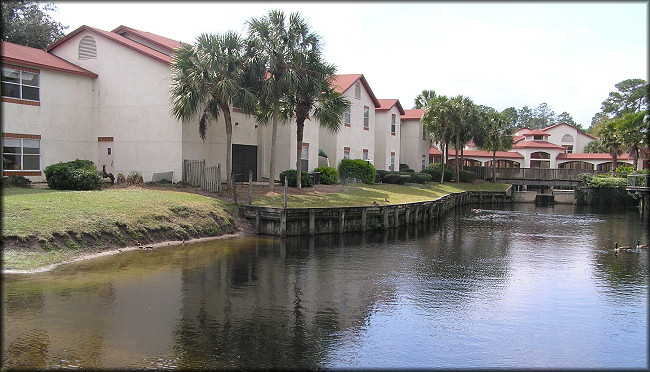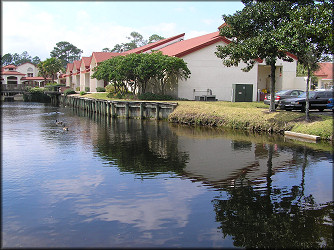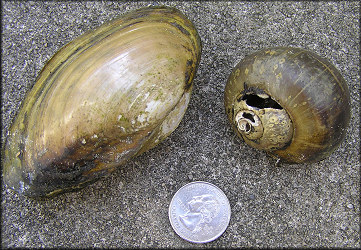|
Atrium Retirement Community Lake, Southeastern Duval County, Florida |
|
|
As part of an on-going
project to formally document the presence of
Pomacea paludosa (Say, 1829)
[Florida
Applesnail] in northeast Florida, this reporter conducted a visit to a
small multi-tiered lake on the property of the privately owned Atrium
Retirement Community, 9960 Atrium Way, in the Regency Square area of
southeastern Duval County on 2/26/2006. Almost immediately upon arrival a dead Pomacea paludosa shell was found in the eastern end of the lake in shallow water (GPS 3019782N 08132432W) as well as several large dead Utterbackia imbecillis (Say, 1829) [Paper Pondshell]. Because the property is posted, only a cursory search for additional specimens or evidence of Pomacea could be made - a search which proved unsuccessful. Three very brief visits to the lake previously during 2005 had shown no evidence of Pomacea and further visits will be necessary to confirm that a breeding population currently exists in the lake. The Regency area watershed (of which the Atrium lake is a part) consists of several small lakes and creeks which feed into Jones Creek (located immediately adjacent to the Atrium) which ultimately flows into the St. Johns River. Pomacea paludosa have previously been confirmed upstream in at least one part of this watershed (see: Regency Appartments) as well as a healthy native freshwater bivalve population indicating good water quality despite urban sprawl and tremendous amount of storm water run-off. It therefore appears possible that "pockets" of Pomacea paludosa may exist throughout the entire watershed. Two follow-up visits were made to the Atrium lake(s), including one on 4/30/2006 during the prime Pomacea mating/egg laying period, and no further evidence of applesnails was observed. Therefore, it appears likely that a breeding population no longer exists. |
|
|
|
|
|
View of the two-tiered Atrium lake |
|
|
|
|
|
Area of the lake where the mollusks were found |
Utterbackia imbecillis and Pomacea paludosa |


